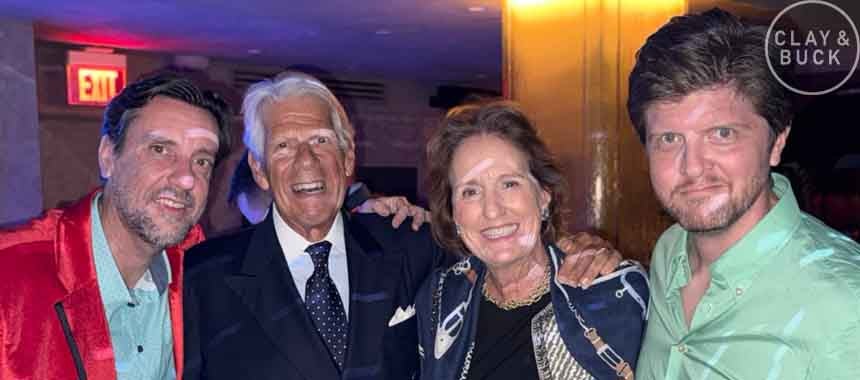A Primer: What Is Gain-of-Function Research?
4 Aug 2022
BUCK: Senator Rand Paul, who will be joining us in just a few minutes has been leading these congressional hearings focused on gain-of-function research. Gain-of-function research. Now, we were talking about this much more in the news cycle because there was the whole, “Where did the Wuhan coronavirus come from?” Right? What was involved here? Initially social media, as you remember, was shutting down any talk of the lab-leak theory until it became clear that there was substantial evidence.
It was quite a coincidence that one of the very few places in the world — the Wuhan Institute of Virology — was a place where they were actually doing gain-of-function research and that there were some U.S. funding going through a carve-out, a third party, making its way to that lab. Yeah. That all of a sudden got a whole lot of attention. What is gain-of-function research in the first place? What kind of regulations exist around it? What do we know about it?
This is something that people should certainly have a deeper, I think, understanding of. So, we’ve had these congressional hearings dedicated to this, it started yesterday, and Rand Paul is looking to pass an amendment to the package of domestic semiconductor manufacturing that would ban all U.S. funding for gain-of-function research in China. But Senate Democrats have objected to this. That’s kind of weird, isn’t it? Hmm. What is gain-of-function research? Well, here. You don’t have to listen to me. Here’s MIT professor Dr. Kevin Esvelt who was at this hearing.
POWERFUL testimony from Dr. Esvelt: pic.twitter.com/81VlXt5SN8
— Senator Rand Paul (@SenRandPaul) August 3, 2022
BUCK: Apparently not. Think about this. You’ve got scientists in China deciding that they’re going to mess around with naturally occurring viruses to see, “Could this virus — with just a little bit of a tweak here, a little bit of a touch-up there — turn into something that is like the Spanish influenza pandemic or like the bubonic plague?” which was actually, as we all know, was a bacteria that was carried by the fleas on the backs of rats particularly, among other animals, mostly on rats.
Would it be something along those lines? Essentially a global mass killer of humanity pathogen. And they were tinkering with these things with the idea that, “Well, if we know what could be really bad then we’ll at least have some way of getting ahead of it, if it happens,” without thinking, “Well, hold on. Maybe if we tinker, we’ll make it into the really bad thing that we were worried about in the first place.” MIT’s Professor Esvelt continued.
BUCK: Chimera, my friends. So, we all know the chimera from Ancient Greek mythology. Do they even still teach that in school? They should, darn it. I feel like they probably have. Ancient Greek mythology is amazing. There’s a lot of on Norse mythology these days ’cause everyone’s like, “Oh, Thor! He’s so cool. Looks at his big arms.” Norse mythology is good, but Ancient Greek mythology is better.
I might get some angry calls about that one, but I’m just gonna say it. Ancient Greek mythology is amazing. The reason why Romans were like, “Yeah, that’s really cool! We’re just gonna take it and change some of the names ’cause it works pretty well.” But the chimera in Greek mythology was a monster with a head of a lion, a goat’s body, and a serpent’s tail, right? But in genetics, it is an organism composed of the cells of more than one distinct genotype.
In virology it would be mixing a couple of different things with the genome to essentially create… A chimera is a better word than a Frankenstein. ‘Cause you know what happens whenever you say that. Oh, yeah, people go, “Frankenstein wasn’t the monster! Frankenstein was the doctor.” Yeah, we all know, okay? But when we say the Frankenstein monster, we all… “Uh – have you even read it?” Actually, it is really good.
You want a book recommendation that I’m pretty sure you can get for free on Kindle and you download, it might be 99 cents that still to this day is phenomenal, Bram Stoker’s, Dracula. Amazing novel to this day. And I know you say, “Oh, I know the story,” and you think of the guy from the movie, like the 1940s was like, “I want to suck your blood,” like, you know, and then we get Count Chocula and all that stuff. The original Bram Stoker’s Dracula novel, I don’t care if you’re 16 or 60, it’s great reading still to this day. Just really, really incredible. And I got distracted from gain-of-function research.
Let’s get back to how this could basically turn into a WMD situation. This is also from the hearing. Rutgers’ Professor Ebright.
Wild clip: @HawleyMO: Let me ask you this—gain of function research and bioweapons, what’s the connection there?@R_H_Ebright: There are immense bioweapons practical applications … the potential pandemic pathogens that can emerge from such studies are potential WMDs. pic.twitter.com/pGuWMIiaOd
— Philip Letsou (@philipletsou) August 3, 2022
BUCK: Weapons of mass destruction that actually really distribute themselves. All they need is to get out once and then they are self-replicating, right? You let out poison gas, as serious as it is, VX gas or something, gas an area, dissipates in the atmosphere, you know, horrible but it’s done. You let out one of these things, a chimera virus manipulated by scientists to find the most dangerous version possible, it keeps going and going. Various iterations of it, even. Perhaps even we see it as a virus that could be aerosolized.
Recent Stories

Ryan Girdusky: Illegal Immigrant Births Drop, Affordability Debate Rises
Our data guru shares insights on newly released data.

Photos and Video: Buck & Carrie's Christmas Party
Enjoy festive highlights from Buck and Carrie's Miami Christmas party.

Carrie's Dad Makes Final Flight as American Airlines Pilot
Congratulations on retirement, Captain Joe Flatley!

U.S. Seizes Oil Tanker Off Venezuela -- Is Regime Change Next?
How far will President Trump go militarily?






